
When you visit somewhere in the off-season, you know that there’s always the chance of bad weather. But you’re prepared to take that risk, because there are the guaranteed benefits of lower prices and fewer tourists.
The average temperatures in northern Morocco at the end of February and into the beginning of March were around 15 degrees celsius, with seven sunshine hours per day and nine rainfall days per month.
That sounded pretty good to me, considering that we hadn’t seen sunshine for months in the UK and the temperatures in London when I left were hovering around zero.
Little did I expect to be greeted with torrential rain when I arrived into Fes in the early hours of the morning, and for it to be raining so heavily for the entire duration of my stay in Chefchaouen that I contemplated aborting the entire mission and returning in summertime.
I also hadn’t come suitably dressed for persistent torrential rain, in a town that’s not structurally equipped to deal with so much of the wet stuff landing in such a short space of time. Water was running in torrents down the narrow cobbled streets, forming huge puddles in all the places it had nowhere to drain away (which, by the way, was everywhere). Wellington boots were actually the only type of footwear that would’ve cut it around Chefchouen on the second and third of March this year. I only had my Rocket Dog Converse-type shoes, which – as I soon discovered – are about as waterproof as a sponge..
Fortunately though, Chefchaouen is a delight to photograph, even in the rain.
A little bit about Chefchaouen
You’re probably reading this either because you’ve visited the town before or because you’re intrigued to do so, so you might already know a little bit about Chefchaouen. But in case you don’t, Chefchaouen is a town located in northwest Morocco, just over 100 kilometres inland from Tangier. Although it boasts a stunning location at the foot of the Rif mountains (its name, incidentally, means “look at the peaks”), the real reason Chefchaouen has earned its fame is because the whole of its old medina is painted blue.
And I’m sure this is the main reason a lot of people (including me!) decide to visit.
It’s novel, unusual, quirky, ridiculously pretty, and looks great on the ‘gram.
So, why is the town painted blue?
It’s at this point that I suddenly feel the urge to be a panelist on QI, frantically waving the “nobody knows” sign (if you haven’t watched QI, you should. Although the ones with Stephen Fry as host are definitely better). Because, whilst there are several theories, nobody really knows why Chefchaouen’s old medina is painted in various different shades of blue.
The theories I’ve found on the net are as follows:
- Blue keeps the mosquitoes away. If this is true, next time I visit Southeast Asia, I’m packing my blue body paint.
- Blue is said to symbolise the sky and heaven, so the buildings in the medina are painted blue as a reminder to its residents to lead a spiritual life.
- Jews introduced the blue when they took refuge from Hitler in the 1930s. Previously windows and doors had been painted a traditional Muslim green. I found one that still is, next to an art gallery in the main square.
What’s the best way to explore the town?
Honestly? Put down your map and get wonderfully lost.
A map won’t be of much use to you anyway because, like Fes’ medina, not many of Chefchaouen’s streets will be named on a map, and those that are probably aren’t the ones you want to find. Similarly, if you do happen to find a street sign actually on one of Chefchaouen’s streets, good luck finding it on a map!
I found the most photographed street in Chefchaouen (which I recognised from photos I’d seen online, and from the long line of tourists waiting their turn to pose on the steps), made a note of its name (“Callejon El Asri” from a plaque on the wall), and then attempted to geotag it on both Facebook and Instagram later. Nope, it wasn’t on Google Maps.
Although it rained continuously during my two days in Chefchaouen, the rain did ease off a little on the second day and the skies brightened up a smidgen. For this reason, I decided that it would be a good idea to revisit all the spots I’d discovered the day before, in order to better capture them on camera. Of course, I couldn’t find any of them.
Chefchaouen’s Medina is more disorientating than Granada’s Albayzín. In the words of Bono, “I still haven’t found what I’m looking for.” But I have found breakfast. And cats.
— GallopAroundTheGlobe (@KiaraGallop) March 3, 2018
I’m sure that, should you be fortunate enough to spend longer than two days here, the jigsaw pieces that make up the town’s medina would slowly start to fall into place (it is, after all, tiny compared to Fes’ version). But for a short stay, it’s nye on impossible to successfully find your way around the confusing blue labyrinth.
A few great things about Chefchaouen’s confusing blue labyrinth
#1 There are cats
Anyone who knows me knows how much I love cats.
Before even arriving into Chefchaouen I’d read about and seen photographs of, the medina’s cat population and immediately I found myself drawing comparisons between Morocco’s Blue Pearl and Istanbul – a city well-known for its population of well-loved feline friends.
Whether they’re tiptoeing along walls, peeking through railings, sitting on steps, in doorways, or beside restaurant tables looking up expectantly at hungry diners, Chefchaouen’s cats are an intrinsic part of their surroundings. I think it’s safe to say that – aside from all the shop owners and tourists – I saw more cats than people inside the medina.
Every doorway is unique and beautiful
Whether plain and humble or intricately detailed, arched, rounded or square, every one of Chaefchaouen’s doorways different to the next.
I made it my mission to snap as many photographs as possible, in order to compile this collage.
The vibe is relaxed and hassle-free
Unlike Fes’ medina, no-one hassles you here. There’s a laid-back, artsy, bohemian vibe, which makes aimless wandering and photograph-taking an absolute delight.
As if to accentuate this fact, the fragrant aroma of marijuana follows you around everywhere you walk. The surrounding countryside is renowned for being a prolific source of kief (Cannabis) in Morocco and whilst I wasn’t offered any here, it is apparently sold all over town (although primarily in the domain of native Chaouenis (people of Chefchaouen)).
Traditional Moroccan mint tea is available everywhere
Not only is is served at every cafe and restaurant, but shop owners will often invite you in to share a pot of mint tea with them, or you can warm your hands on one whilst browsing one of the local art galleries.
For those of you who haven’t tried Moroccan mint tea, it’s nothing like the mint tea you’ve likely drank at home. Most mint tea available in the UK is made from peppermint, whereas Moroccan mint tea is made from spearmint. It’s a lot smoother and sweeter and somehow offers a much more warming, comforting experience. I couldn’t get enough of it!
Moroccan mint tea is like drinking a comforting warm mojito, and therefore I love it 😋
— GallopAroundTheGlobe (@KiaraGallop) March 2, 2018
The best cheese salad I’ve ever tasted is available at one of the medina’s restaurants
I love cheese and I love salad, so when I read this post by Sylvia and discovered how excited she got about this particular cheese salad she’d eaten in Chefchaouen, I knew I had to sample it and find out first hand whether it actually was that good.
And guys, I can honestly tell you it is!
The cheese salad at Chez Hichamcontains lettuce, spinach, tomatoes, walnuts, sultanas, and goats cheese, all drizzled in honey and balsamic vinegar. I ordered it together with Shakshouka (which was actually nothing like the Shakshouka I’ve eaten in the UK, but delicious all the same and went really well with the salad) and two cups of mint tea, and was given some complimentary bread and olives. The whole bill came to just 80 dirham (£6.26)
But what is there to actually DO here?
What do you mean, that wandering around aimlessly taking hundreds of photographs of the towns’ pretty streets and decorative doorways isn’t enough for you? To be honest, I think it would take a good few days (possibly more) for me to tire of this. But if you’d like to break up your photography expeditions inside the medina, then there are a few other sights and activities I’d recommend:
- Climb the Kasbah tower for some great views over the medina. The tower seemed to be shut every time I walked by (whether I just had impeccably bad timing or whether it had been closed as a result of the adverse weather conditions, I’ll never know), so unfortunately I can’t share a photograph of the views with you. However if you’re lucky enough to gain entry into the Kasbah, there is apparently a lovely walled garden out the back, as well as an ethnographic museum and an art gallery showcasing the work of local artists.
- Take a hike up to the Spanish Mosque. My guidebook says, “it’s a pleasant walk along clear paths,” however the reality of the situation when I attempted the walk was that it was a slippery walk along muddy waterlogged paths. And, like I say, I didn’t have any sensible footwear with me, so I abandoned the mission in favour of spending some more time inside the medina. However, when I was stopped by an Australian couple to enquire as to whether I knew the way back to the main square, they mentioned that they’d walked up to the Spanish Mosque a few days previously (when it wasn’t raining). When I asked them if they’d recommend it, they responded – in true Churchill dog style – “Oh yes!” There are also apparently amazing views from the mosque, of the sprawling blue medina against a backdrop of the fertile Rif mountains.
- Visit a hammam. I’ve never been brave enough to try one of these on my own (I’m British and very reserved when it comes to nakedness so I think I’d need the encouragement and moral support of a companion in order to succumb to the experience), but I desperately want to! Chefchaouen’s hammam, Douches Barakat, is located between the main square and Laakel Mosque. It costs 20 dirham to enter, but it’s worth noting that men cannot enter at the same time as women.
- Do some trekking in the Rif mountains. It’s possible to organise treks, ranging from half a day to several days, in either the Parc National Talassemtane or the Bouhachem Regional Nature Reserve. With Abdeslam Mouden you can visit honey production, cheese-making and organic vegetable faming projects. Alternatively, Chaouen Rural run treks with a focus on medicinal plants found within the Talassemtane National Park.
[box size=”large” style=”rounded” border=”full”]
Practical Info about Visiting Chefchaouen
I stayed at Dar Swiar, a cosy little riad just off the main shopping street that runs up to the main square. I had my own apartment with kitchenette, two beds, table and chairs, extra blankets (you’ll definitely need these at night if you visit in March!) and a heater that I fully utilised in order to dry my soaking wet clothes and squelchy shoes. There are windows that open up to look over the streets below, which must be completely lovely in summer, but not so great when it’s cold and raining heavily outside.
Check current rates and availability here.
I travelled to Chefchaouen from Fes on a CTM bus for a cost of 75 dirham one-way. The journey was supposed to take four hours but took nearly five. There are several departures each day but it’s advisable to book in advance from the bus station just outside the medina. Book your return journey at the same time as the buses get full pretty quickly.[/box]
If you like this article, please share it on social media using the share buttons at the top of the post. Alternatively you can follow along on Facebook, Twitter, or Google+ or you can look me up on Instagram or Pinterest too!
**Some of the links in this post are affiliate links. All this means is that if you make a purchase through one of the links I have provided, I will earn a small commission as a result but the cost to you will remain exactly the same. Any commission I make helps to keep this site running. Many thanks for your support!**
And here are some pretty images for your Pinterest boards…. 😀


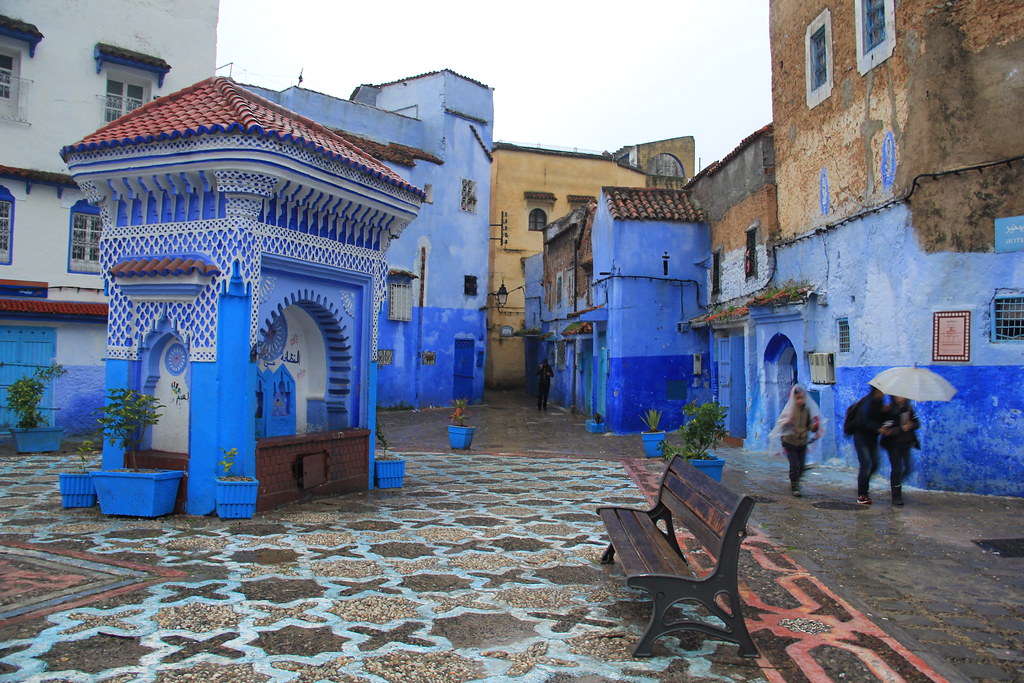
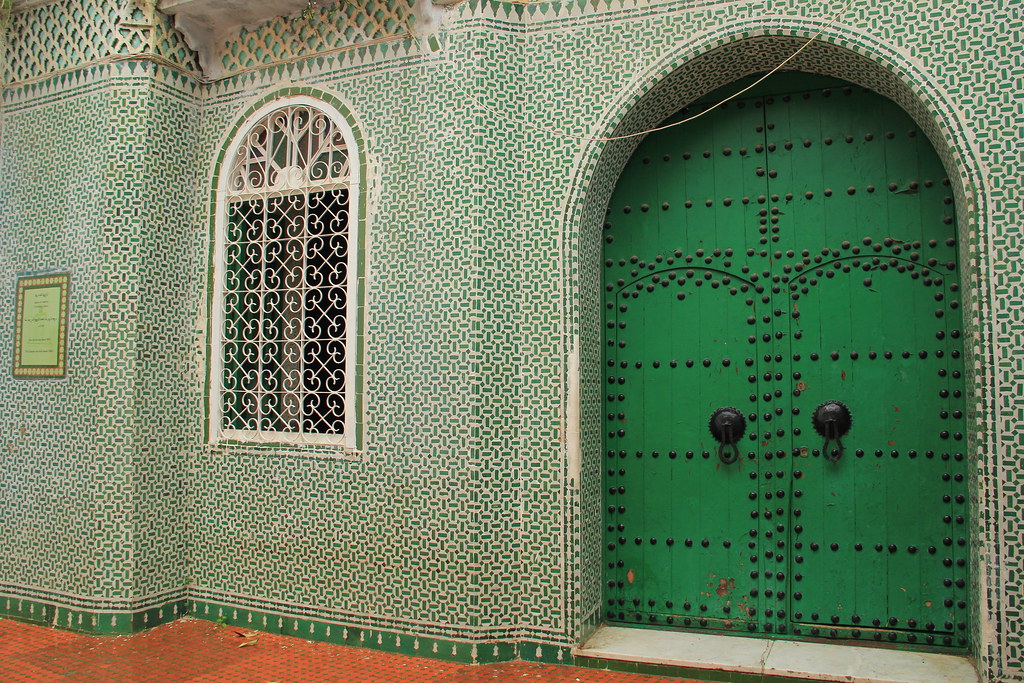
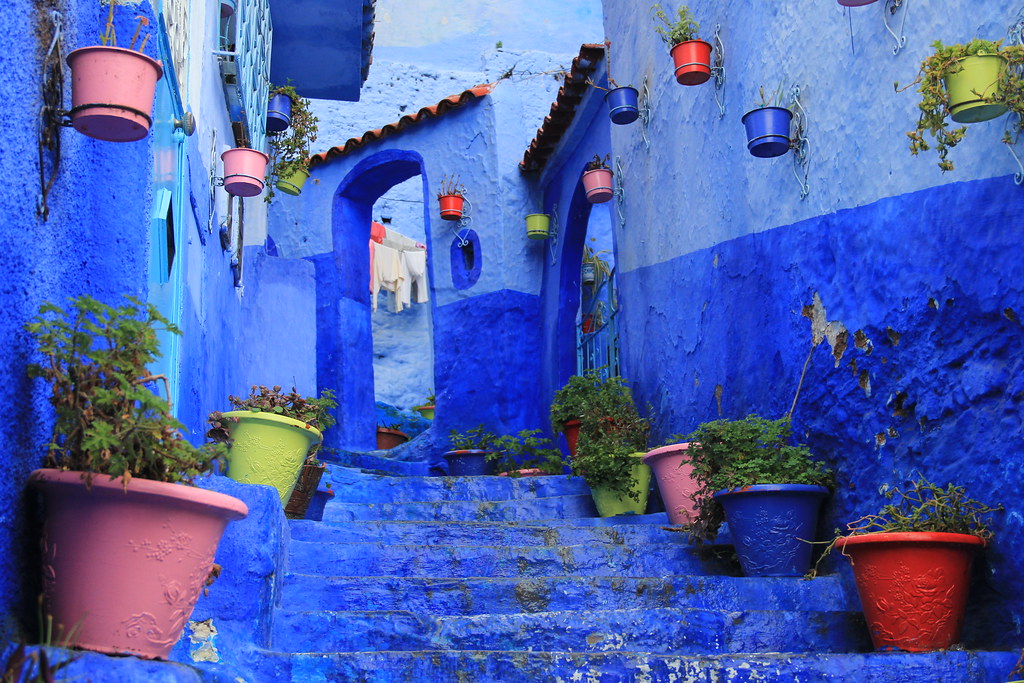
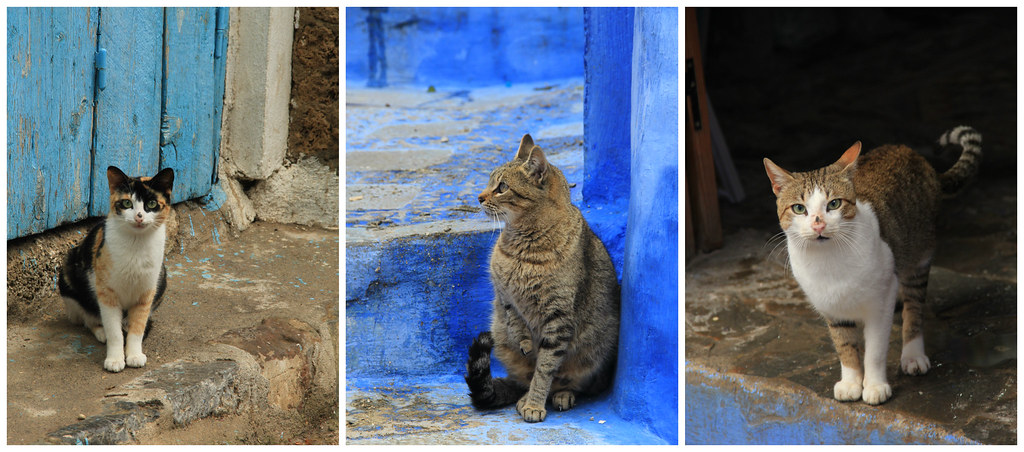
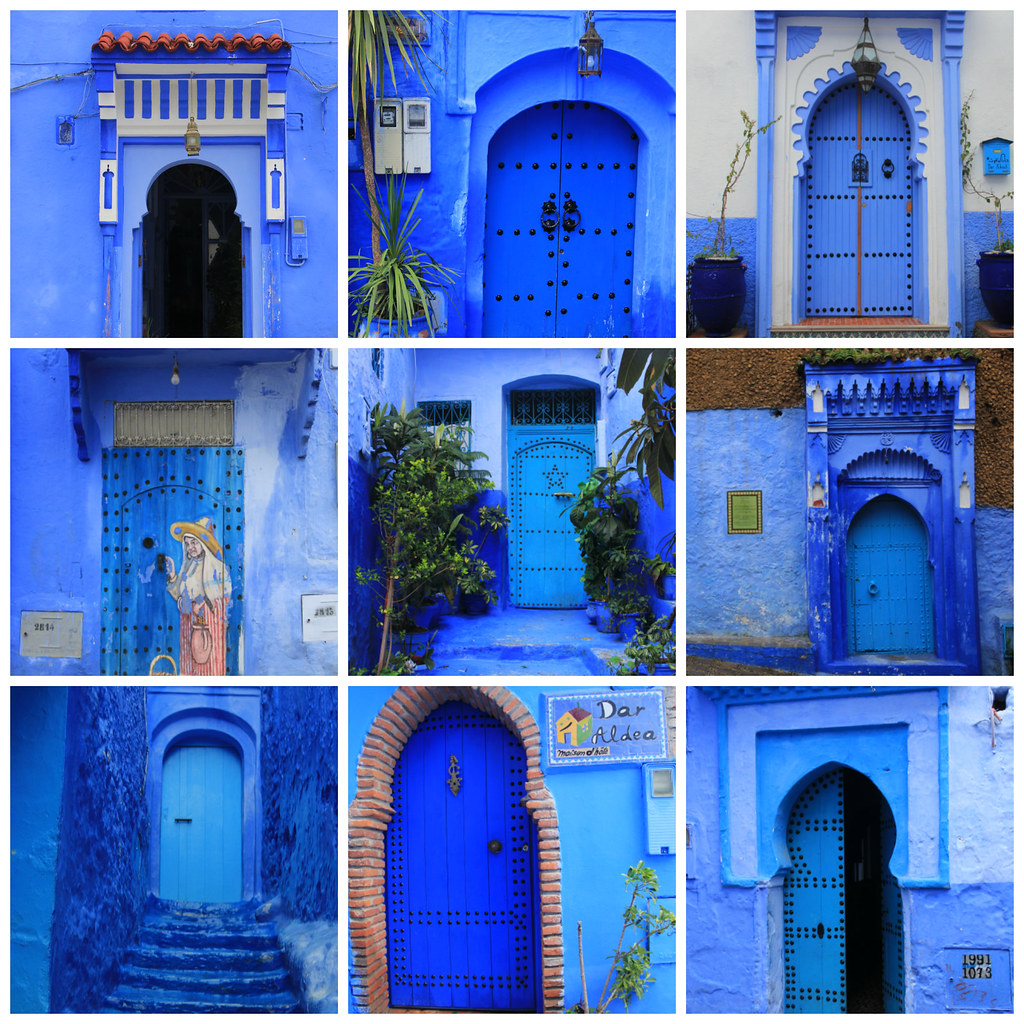
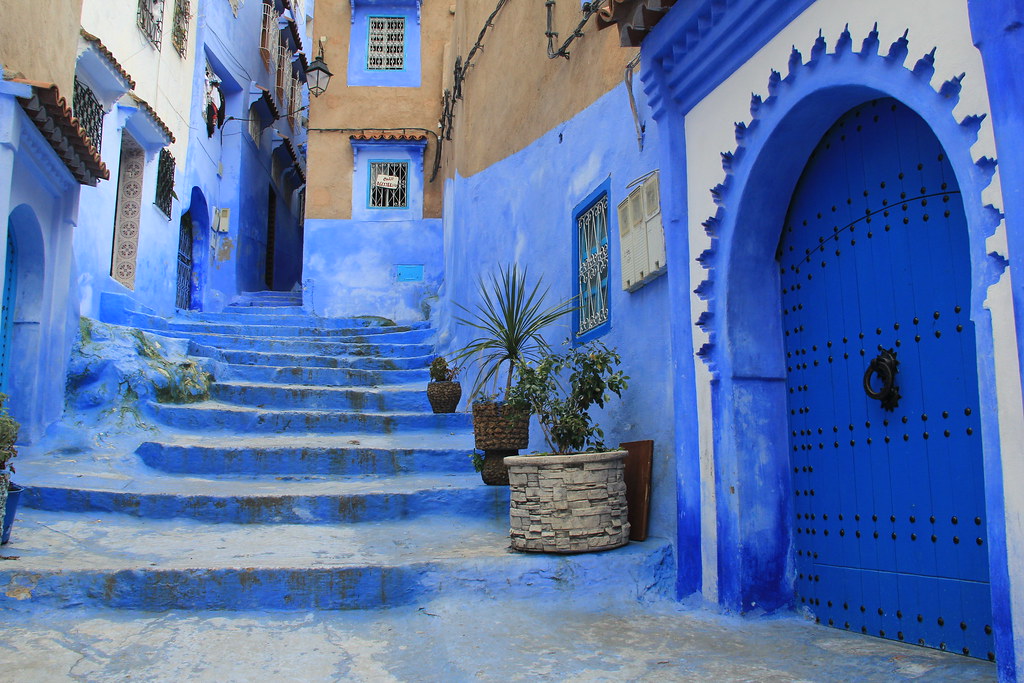
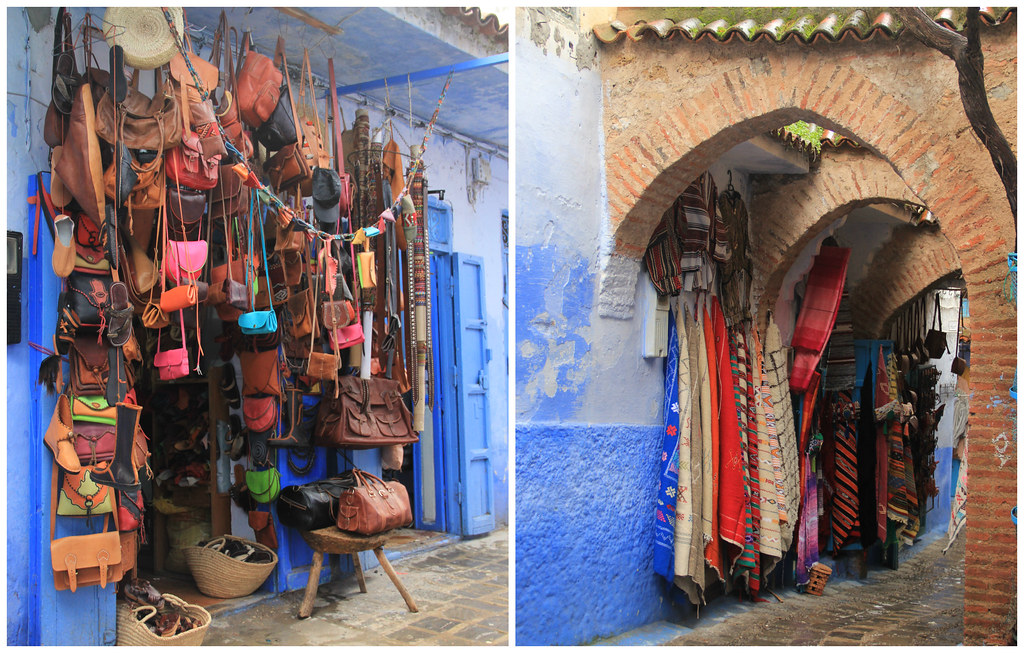
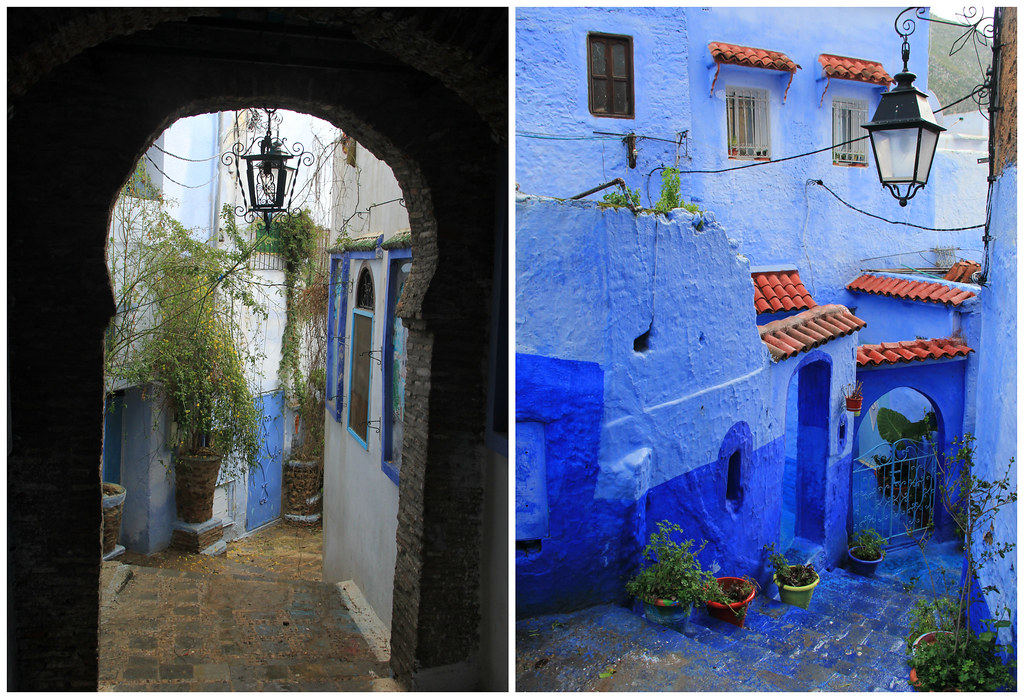
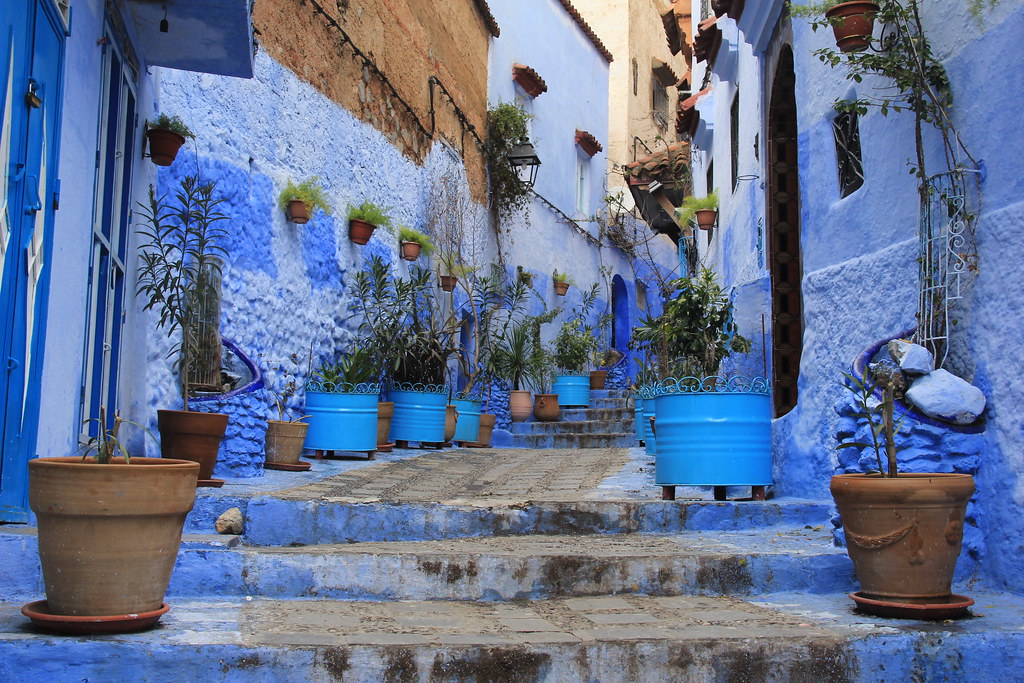
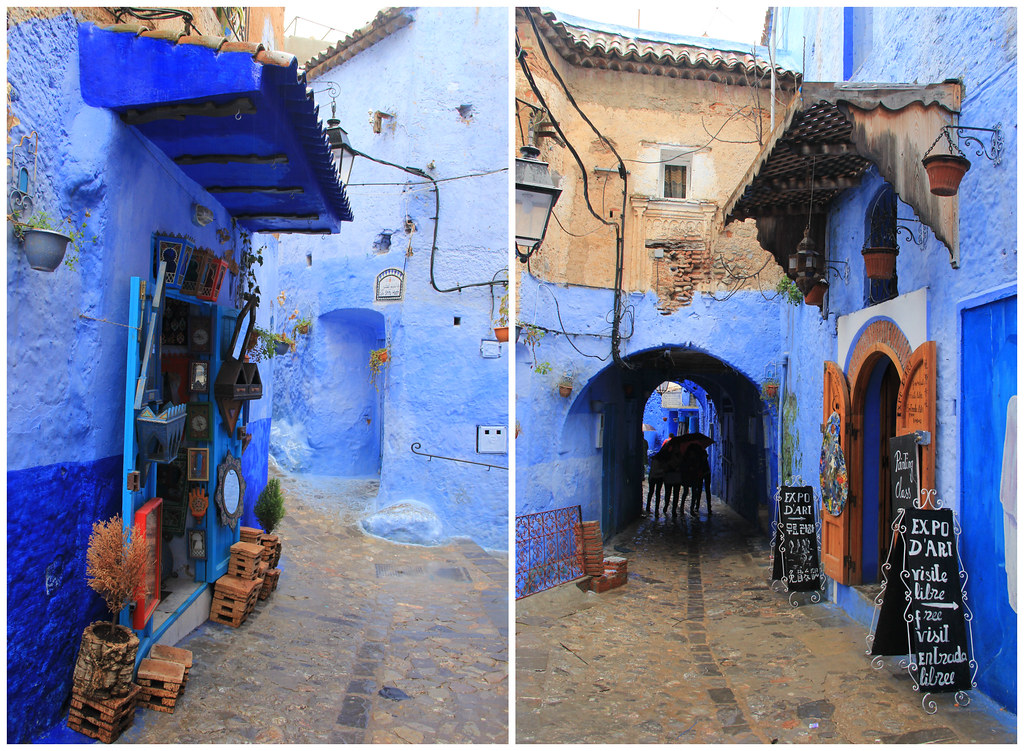
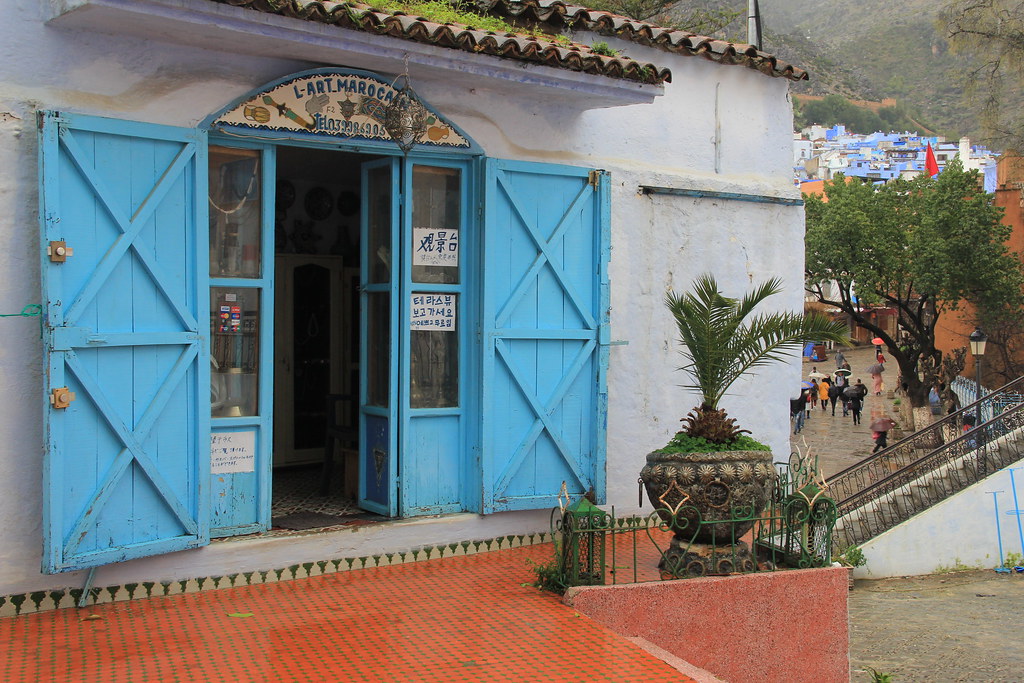
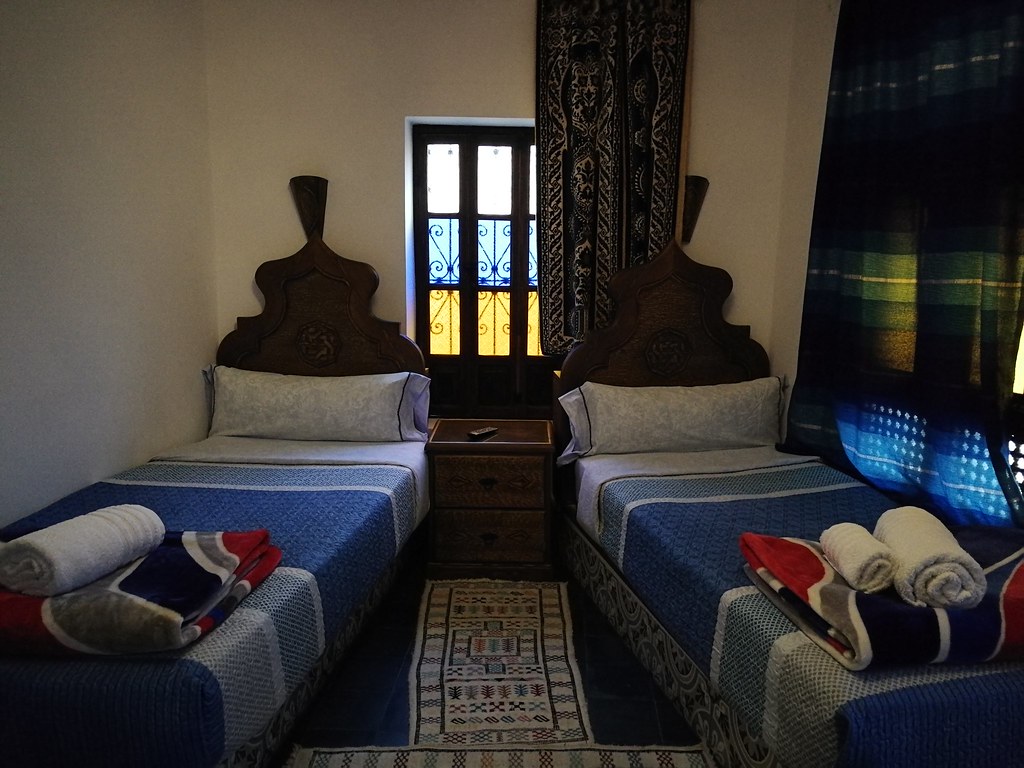
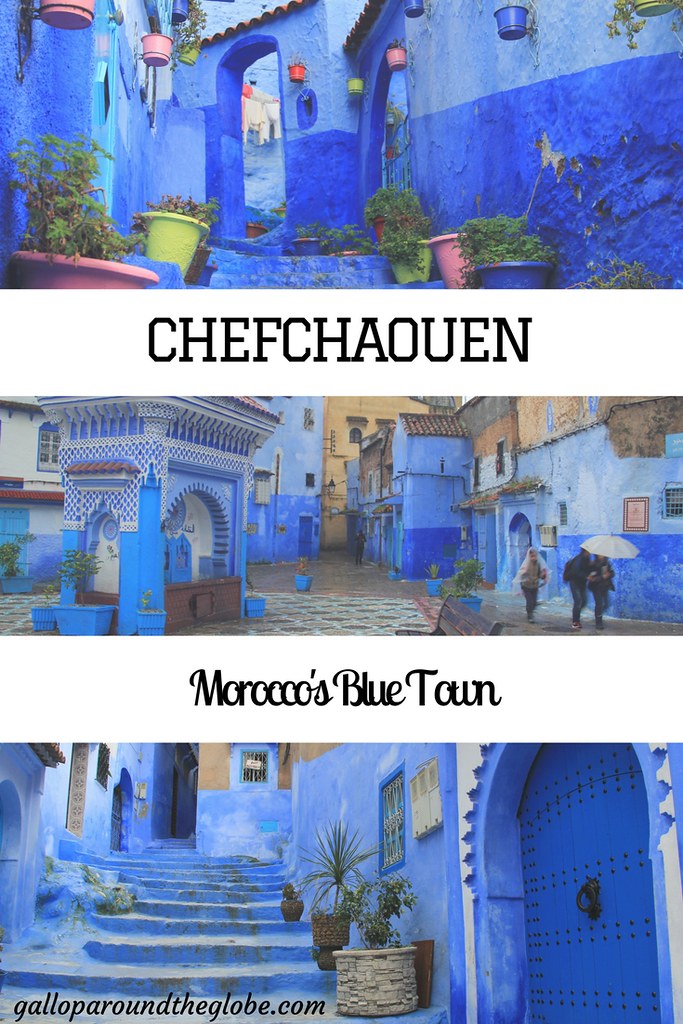
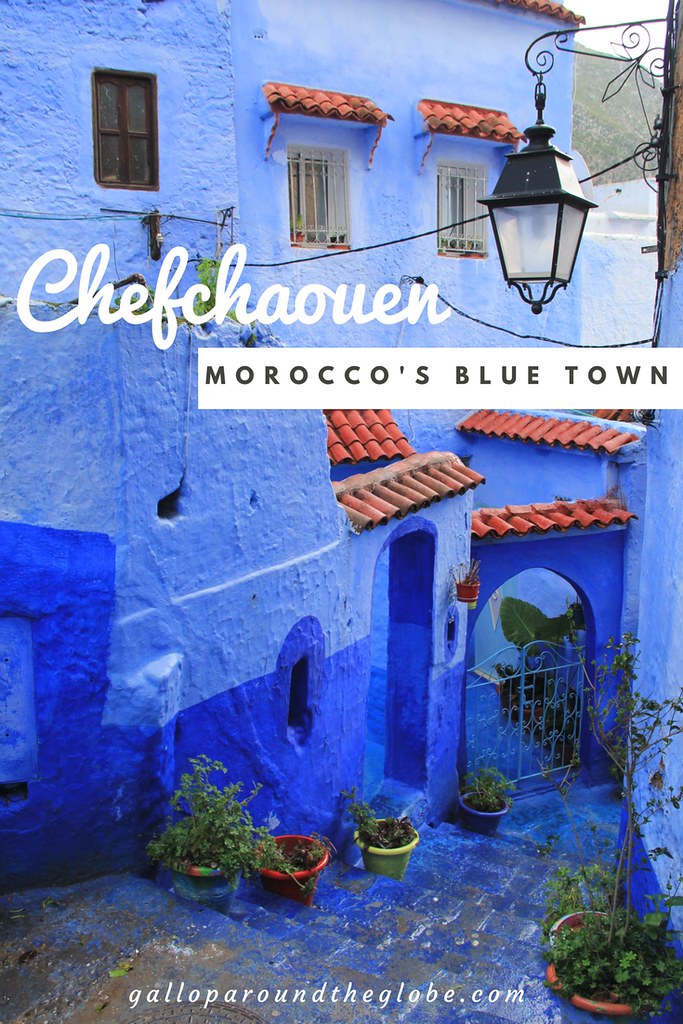

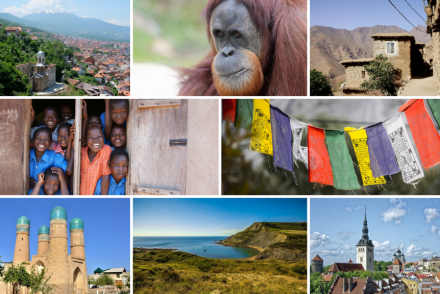



11 Comments
I’ve only just recently heard about this town and I’m in LOVE! What a beautiful place. Your photos are some of the best I’ve seen, too! I love those colorful flower pots against the blue walls and, of course, the sweet cats! Definitely won’t be missing out on this town when I make it to Morocco someday!
So pleased you like my photos 🙂 although it’s very easy to come away with Instagram-worthy shots, because the whole town is so damn photogenic! Apparently there’s a blue town in Spain as well (called Juzcar) so that’s next on my list 😀
Such a beautiful post, definitely agree it still looks beautiful in the rain! And if Blue keeps the mosquitoes away, then I defintely need to invest in blue body paint/blue clothes/blue everything haha!!
Hey I’m up for trying anything with regards to keeping the mosquitoes away! They definitely seem to have a fondness for me! 😀
Thank you so much for putting together such a comprehensive write up of the place. I am dying to go here and after seeing all your photos I am even more convinced!!
Nowhere near as comprehensive as your Everest Base Camp write up, but then there’s far less effort involved in visiting Chefchaouen! 😀 It’s definitely worth a visit though; my host reckoned April, May and June are the best months weather-wise.
What a lovely journey, yours and mine as a reader. The pics are amazing and definitely this wonder not to miss while in Morocco.
Aw, thanks Mirela 🙂 and yes, definitely not one to be missed!
I love that cats were your first point! 😀 These photos look amazing, I really want to visit this place. I have been to Marrakech in the past and didn’t really like Jemaa El Fnr but loved the other parts of Morocco that I saw. Chefchaouen is definitely on my list!
It is like one of the most photogenic corners of the world <3
http://carmelatte.co/the-most-instagrammable-places-london-april-2018/
Great work , interesting post and fantastic photos , thanx for sharing this enjoyable article